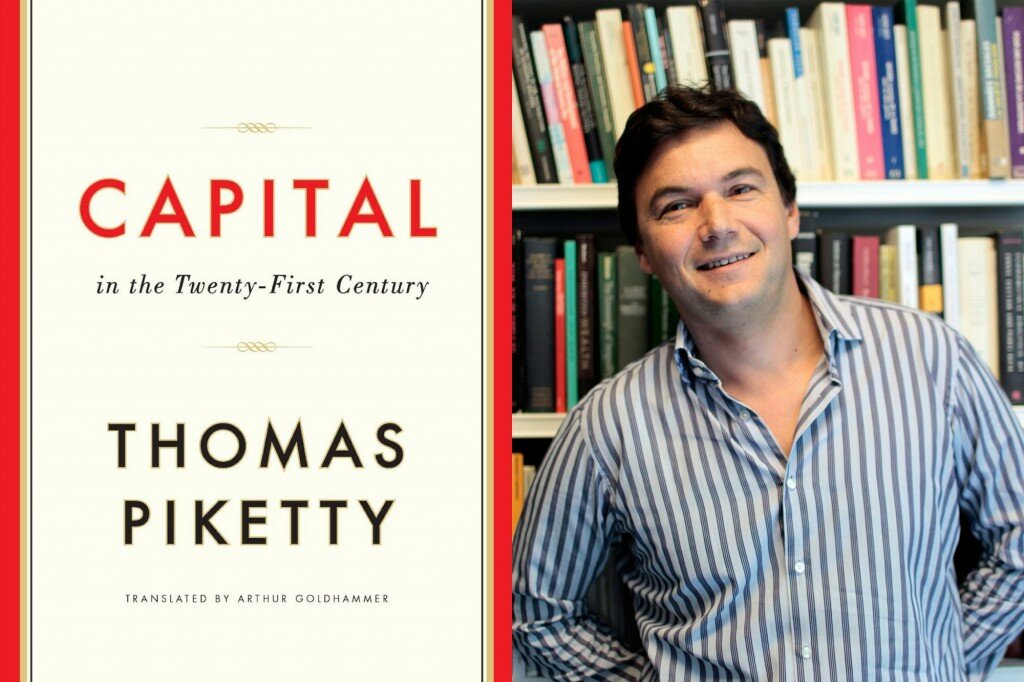More and more, Thomas Piketty’s name comes up in the debate on the so-called growing “wealth gap” between the 1% and everyone else. In his new best-selling book, “Capital in the Twenty-First Century,” Piketty argues that capitalism will eventually result in accumulating the wealth of the world into just a few hands to a “potentially terrifying” degree.
However, according to a recent op-ed in the Wall Street Journal by Alan Reynolds, there are some serious problems with his data. Criticisms first emerged in the Financial Times:
“In late May, Financial Times economics editor Chris Giles published an essay that found numerous errors in Mr. Piketty’s data.”
Piketty’s response to this critique is to say that, well, the data questioned by Giles mostly involves Europe, and does not apply to the U.S. He points to work by Zucman and Saez on the U.S. wealth gap that he calls “much more systematic … [and] reliable.” The problem is that, according to Reynolds, the Zucman-Saez data “are so misleading as to be worthless.”
“They attempt to estimate top U.S. wealth shares on the basis of that portion of capital income reported on individual income tax returns–interest, dividends, rent and capital gains. This won’t work because federal tax laws in 1981, 1986, 1997 and 2003 momentously changed (1) the rules about which sorts of capital income have to be reported, (2) the tax incentives to report business income on individual rather than corporate tax forms, and (3) the tax incentives for high-income taxpayers to respond to lower tax rates on capital gains and dividends by realizing more capital gains and holding more dividend-paying stocks.”
Here are just a few specific examples that Reynolds brings to light…
- Interest income: “Interest income from tax-exempt municipal bonds was unreported before 1987—so the subsequent reporting of income created an illusory increase in top incomes and wealth. Since 1997, by contrast, most capital gains on home sales have disappeared from the tax returns of middle-income couples, thanks to a $500,000 tax exemption. And since the mid-1980s, most capital income and capital gains of middle-income savers began to vanish from tax returns by migrating into IRAs, 401(k)s and other retirement and college savings plans.
- Income moving from corporate to individual tax returns: ”When individual tax rates dropped from 70% in 1980 to 28% in 1988, this provoked a massive shift: from retaining private business income inside C-corporations to letting earnings pass through to the owners’ individual tax returns via partnerships, LLCs and Subchapter S corporations. From 1980 to 2007, reports the Congressional Budget Office, “the share of receipts generated by pass-through entities more than doubled over the period—from 14 percent to 38 percent.” Moving capital income from one tax form to another did not mean the wealth of the top 1% increased. It simply moved.”
- Tax rates and capital gains: “There were huge, sustained increases in reported capital gains among the top 1% after the capital-gains tax was reduced to 20% from 28% in 1997, and when it was further reduced to 15% in 2003. Although more frequent asset sales showed up as an increase in capital income, realized gains are no more valuable than unrealized gains so realization of gains tells us almost nothing about wealth. Similarly, a portfolio shift from municipal bonds, coins or cash into dividend-paying stocks after the tax on dividends fell to 15% in 2003 might look like more capital income when it was merely swapping an untaxed asset for a taxable one.”
One of the most controversial recommendations that comes from Piketty’s book is a so-called “wealth tax.” However, based on Alan Reynolds’ article, I think we have reason to look at this and other suggestions by Piketty with a very healthy dose of skepticism.





